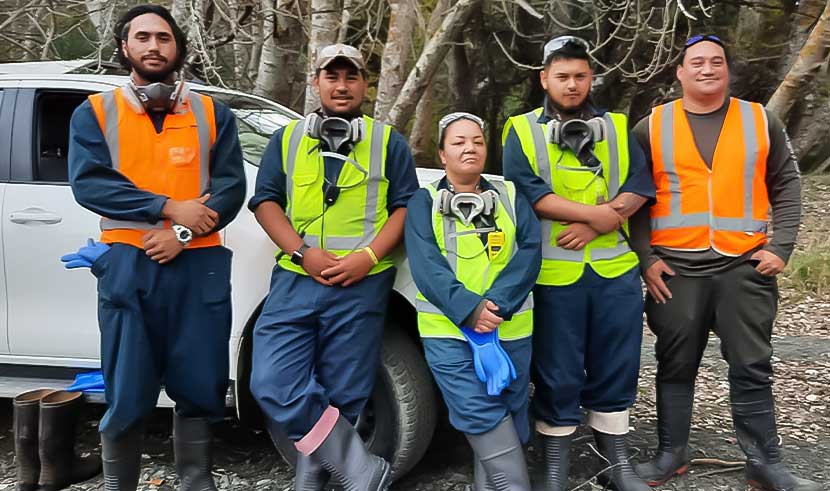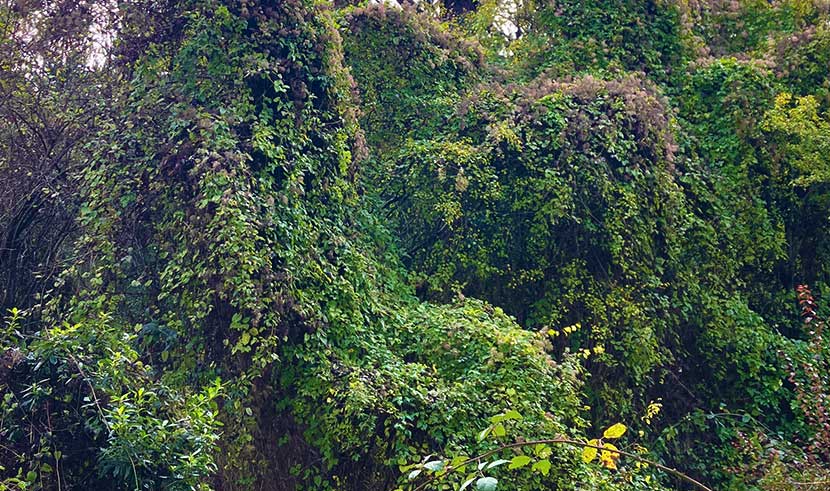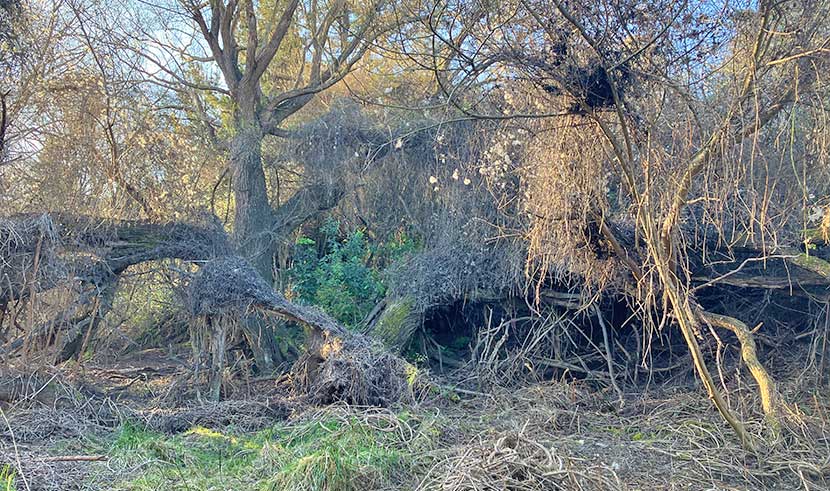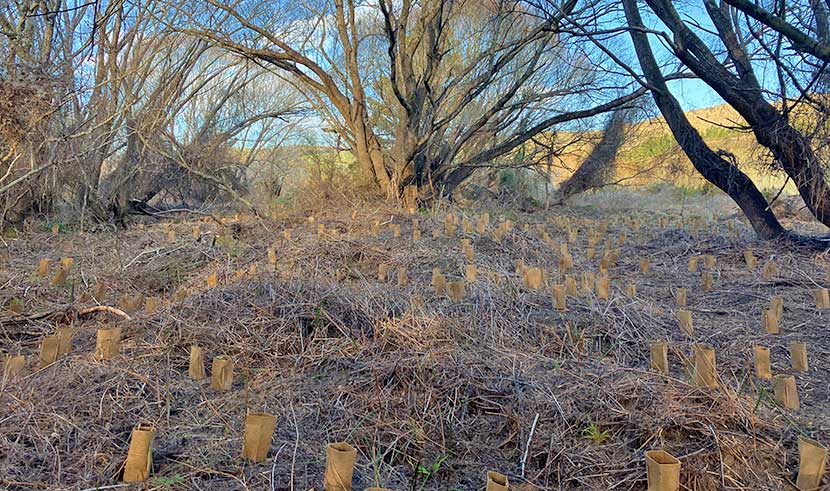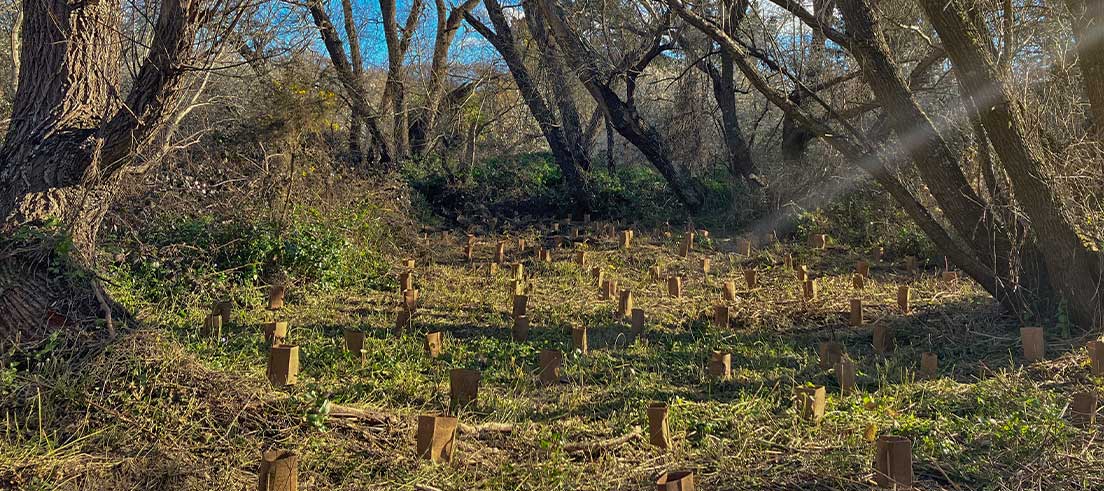
Hurunui regeneration project reconnects mana whenua
We are working with Te Rūnanga o Kaikōura to regenerate sections of the Hurunui River berm, improving flood protection and climate change resilience, and supporting the regeneration of habitat for native animals and plants.
Part-funded by the government’s Shovel Ready funding, the berm transition project has taken on a powerful meaning for those carrying out the physical works; one that connects their values and aspirations with the restoration of both whenua and awa.
We visited the restoration team on-site to talk about this project’s significance to them.
Targeted weed control lays the foundations for flood resilience
Rāwiri Manawatu is the Kaiwhakahaere for Te Rūnanga o Kaikōura Ltd, a commercial arm of the rūnanga. He greets us at the rest stop next to the Hurunui SH1 bridge.
"The Hurunui River is culturally significant to Ngāti Kurī and Ngāi Tahu. The kaimahi on site are all descendants of these two iwi, so they have a direct ancestral connection to this place and awa.
"The fact that we’ve been able to work on the whenua, restore our awa and native plants is a huge win for us because that aligns with our values and aspirations: restoration of the awa, restoration of the whenua," Rawiri says.
After a short walk from the carpark, a barrier indicates we are about to enter an operational site.
Behind the barrier four kaimahi in fresh, neck-to-foot coveralls, gumboots and gloves, are busily mixing herbicide they’ll use for today’s task: targeted weed control works in the river berm of the Hurunui.
The berms of our braided rivers are the area between the active channels and the stopbanks. By helping to slow and absorb the force of flood waters, river berms play a critical role in protecting people and property during flooding.
When weeds are allowed to take over, it can significantly affect the berm’s ability to handle floodwaters. Weeds can damage flood protection infrastructure such as trees and stopbanks and they can choke the river, leading to out-of-river flooding and erosion.
The team on the ground, Tūhawaiki, Alex, Sabina and Rex have been here before, cutting through huge areas of dense weed. Today’s mahi involves site preparation for native plantings and ground spraying to ensure the pest plants don’t have a chance to make a quick return.
Before any work starts though, the team unites for karakia, or prayer. An integral part of all things in te ao Māori, karakia carries elements of blessings, protection, community, and uplifting wairua.
Setting up the whenua for the next generations
Next Rawiri goes over health and safety protocols, including caring for the mauri of the site and fellow kaimahi. This demonstrates the company’s commitment to te ao Māori and kaimahi safety - visually it is seen in the quality and range of protective equipment they use while operating.
While the others continue to prepare for the targeted weed control, Sabina talks about what the project means to her. Previously working on road and rail projects, she’s been working with the rūnanga on projects throughout Kaikōura for the last two years. Which job does she prefer? Without hesitation, “this one”. Being able to work on a variety of projects with a great crew and knowing the work she does today will benefit the generations of tomorrow makes for an easy choice, she says.
It’s time for the team to gear up and head out to the area they’ll be spraying today. The day is warm, their coveralls, thick. Aloud, one of the boys hopes for a bit of rain; unfortunately for him, the day’s forecast is crystal clear. The crew start off to the site beyond and we head back to the carpark.
In a few weeks, they’ll return to the site to begin planting out the area with native species.
"Having our crew out there being able to connect with the whenua and the awa is a great thing to see," Rāwiri said.
"It boosts the kaimahi up, fills their cup, especially into their wairuatanga, whakapapa and cultural identity. All of our crew are quite young, so this is all new for them. They love working on the whenua, seeing the progress from when they start to when they plant is a huge thing for them.
"They can see what they’re creating and know that it’s intergenerational. The plants they’re planting now help the next generation and the generations afterwards. That’s how they know it’s important," he says.
The mahi here is about so much more for the team – not only restoring the balance of the environment but restoring connection to their whakapapa.
Permanent central government co-investment
Significant flood protection, biodiversity, and community projects like this have been made possible due to the Government’s one-off COVID-19 response shovel-ready funding.
However, climate change induced events across the country have highlighted the urgent need to remediate outdated flood protection infrastructure.
Currently, regional and unitary councils invest about $200 million each year in flood protection schemes. With ageing structures no longer able to meet the levels of service expected by communities against the challenge of climate change, this is expected to fall short of what’s needed by $150 million per annum.
Read about why co-investment is critical to the future of flood protection.
What is increasingly clear is that a shared investment today means lower overall recovery costs, and better protection for the environment, and for current and future generations.

